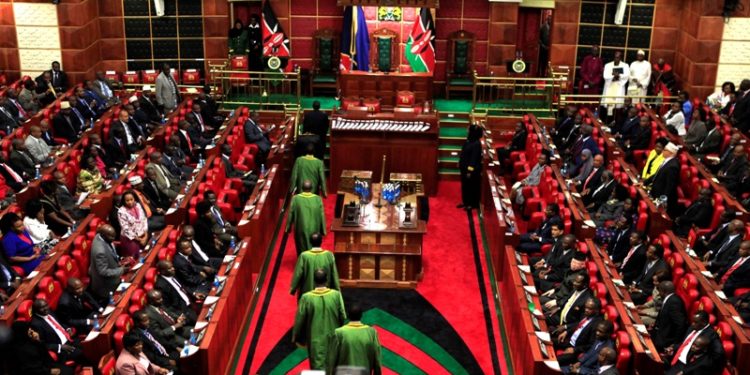The Kenyan parliament has approved the conversion of the Kenya debt threshold from a Ksh 10 trillion debt ceiling to a debt anchor as a percentage of the Gross Domestic Product (GDP) anchored at 55% of the GDP in present value terms. This indicates that the public debt will no longer be an absolute definite figure but rather a changing figure each year as 55% of the GDP. The National Assembly Public Debt and Privatization Committee provided a window not exceeding 5%, implying that the government will not borrow beyond 60% of the GDP in present value times.
Read more: Ruto’s Cabinet Seeks To Transform Debt Ceiling
This has been one of the International Monetary Fund’s most stringent requirements on the Kenyan government in pursuit of a lower fiscal deficit via cutting spending and increasing revenue. The international lender has also been advocating for a doubling of the Value Added Tax (VAT) on fuel from the existing 8% to 16%, which has been seen on the Finance Bill 2023 Proposal despite the public outcry over the soaring prices of petroleum products in the country. This was after the implementation of the earlier IMF condition of scrapping the fuel subsidies. The doubled VAT will see the government earn an additional Ksh 50 billion, which is projected to narrow the budget deficit of 4.4% of GDP in the 2023–2024 Ksh 3.7 trillion budget. This is in addition to the advocation for the removal of some products from the zero-rating list and the regulation of tax receipts spent on bloated state corporation payrolls, as well as the consistent bailouts of the state corporations with taxpayer money. The government has been keen on these implementations, as seen in the Finance Bill 2023, which indicates a continued good relationship with the international lenders.
Read more: State of Kenya’s Public Debt
The altering of the debt ceiling to a debt anchor will see the government have to reduce its spending since the current public debt as a percentage of GDP stands at 64.7% of March 2023. The percentage anchoring is expected to represent the current debt value in contrast to the current value of future cash flows. This is considered a good control for foreign borrowing since it’s a representation of the country’s production compared to the existing debt ceiling.
Email your news TIPS to editor@thesharpdaily.com

















